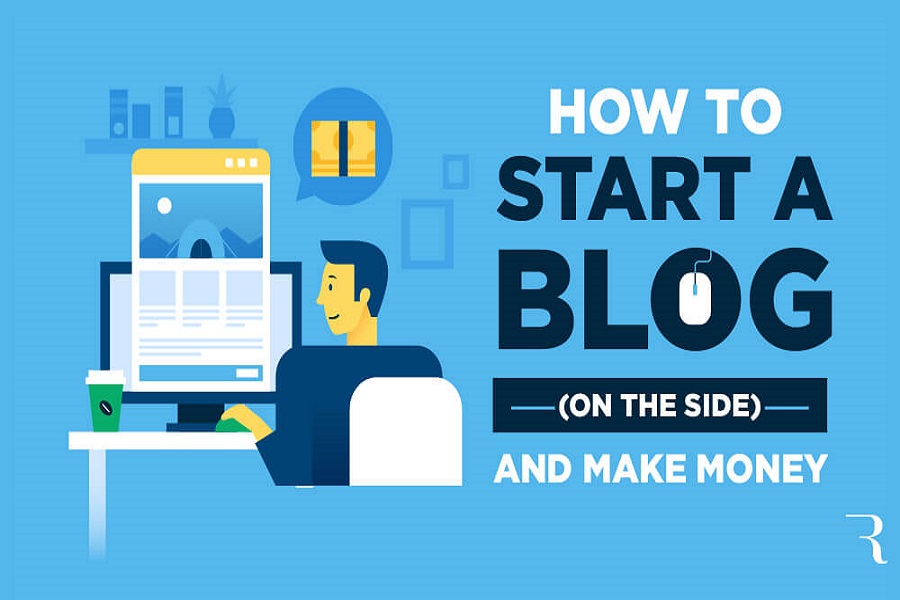WordPress remains one of the most popular content management systems that excel at hosting and building modern and neat sites.
Since 2011, WordPress has enjoyed exponential user adoption, with over 40% of the websites on the internet currently hosted on WordPress.
If you have opinions to share and desire to give your audience something refreshing to read about, you want to roll out a blog and host it on an easy-to-manage platform like WordPress.
What is more, WordPress is free and can be extensively customized to your design specifics.
Of course, we will not deny that there are some technical nuances to efficiently using WordPress. But the good news is that in this article, we will lay out a detailed step-by-step process for getting WordPress set up for your blog.
Ready?
Getting started with WordPress
The process is easy, regardless of who you are. So, just read through as I begin.
The first step is the set-up stage. The c-Panel section here will direct you to the ‘’Get Started’’ button. Thereafter, you’ll be asked to choose your preferred domain name.
Next, you’ll type in your credentials. This entails your username, password, and website name. Consequently, you’ll be welcomed to your new blog.
The third stage involves designing your new blog with beautiful themes. This, obviously, is an exciting stage because you’ll want to use different tools and features to tweak the looks of your blog to your satisfaction.
When you click to add any new feature, you have to click on the ‘’Add New’’ button for it to take effect.
There are lots of WordPress themes. Some are free, while others are paid. So, you are now left with the choice to use any available tool on your dashboard to customize your blog, so it can serve the purpose you intended it.
When you are satisfied with designing and customizing your WordPress blog, you may now create your first blog post.
This process is easy and does not require any special skill. To start, just click on ‘’Posts’’ and go to ‘’Add New’’ menu on your dashboard.
You will see a blank space where you can write your post. Write just and publish anything, even about your dog’s favorite Gucci shoes!
WordPress has an extensive library of plugins (both free and paid) to facilitate your content management and delivery experience.
These plugins cuts across SEO packages like Yoast SEO and SEO Press, security and performance plugins like JetPack, and opt-in packages like Monster and Lead Pages.
Alternatives to WordPress for bloggers
Of course, while the majority of bloggers today have a bias for WordPress, it is not the only viable solution out there.
For the sake of flexibility and filling your tables with more options, let us consider some proportionately robust WordPress alternatives you can consider.
Blogger
Blogger is known to be a very popular blog hosting platform. It is free to use and easy for anyone who plans to set up a blog account.
Blogger, which is a Google service, allows its users to add widgets to blogs, edit HTML, write content, add videos and photos, and then publish.
This, however, is made possible if the user has a Google account.
Features
Blogger features an easy-to-use blogging platform with beautiful tools that do not require substantial technical knowledge.
Pros:
- It is effortless to use and manage without any special skill
- The platform does not require any fee
- Protected by Google’s secure platform
Cons:
- Basic blogging tools and features are limited on this platform.
- Available templates are very few, with limited design tools.
- Google can decide to cancel Blogger service, thereby suspending your blog because you do not own it.
Wix
If you’re looking for some of the best blog hosting plans in the twenty-first century, Wix is an excellent bet for your money.
The hosting platform allows small businesses to create and design their blogs with special drag-and-drop tools.
In addition, you can possibly incorporate a blog into your website by adding an app known as Wix Blog.
Features
- Wix, as a hosting platform, is easy to use even for those with minimal coding proficiency.
- They have a strong capacity to currently accommodate more than one hundred million users throughout the world.
Pros:
- Easy to set up and use
- Hosts limitless blogs on a single account
- Available templates and apps to customize your blog
- Use drag and drop without editing codes
Cons:
- Third-party apps are not sufficient
- Limited free account
- Ecommerce features and tools are not sufficient
There you go. We have come to the end of this guide, and we believe we have equipped you with actionable insights into hosting your blog on WordPress or what feasible alternatives to consider.

